Flowers always make people better, happier and more useful; they are sunshine, food and medicine for the soul.
Las flores siempre hacen que la gente sea mejor, más feliz y más útil; son el sol, la comida y la medicina para el alma.
Luther Burbank in Ok diario
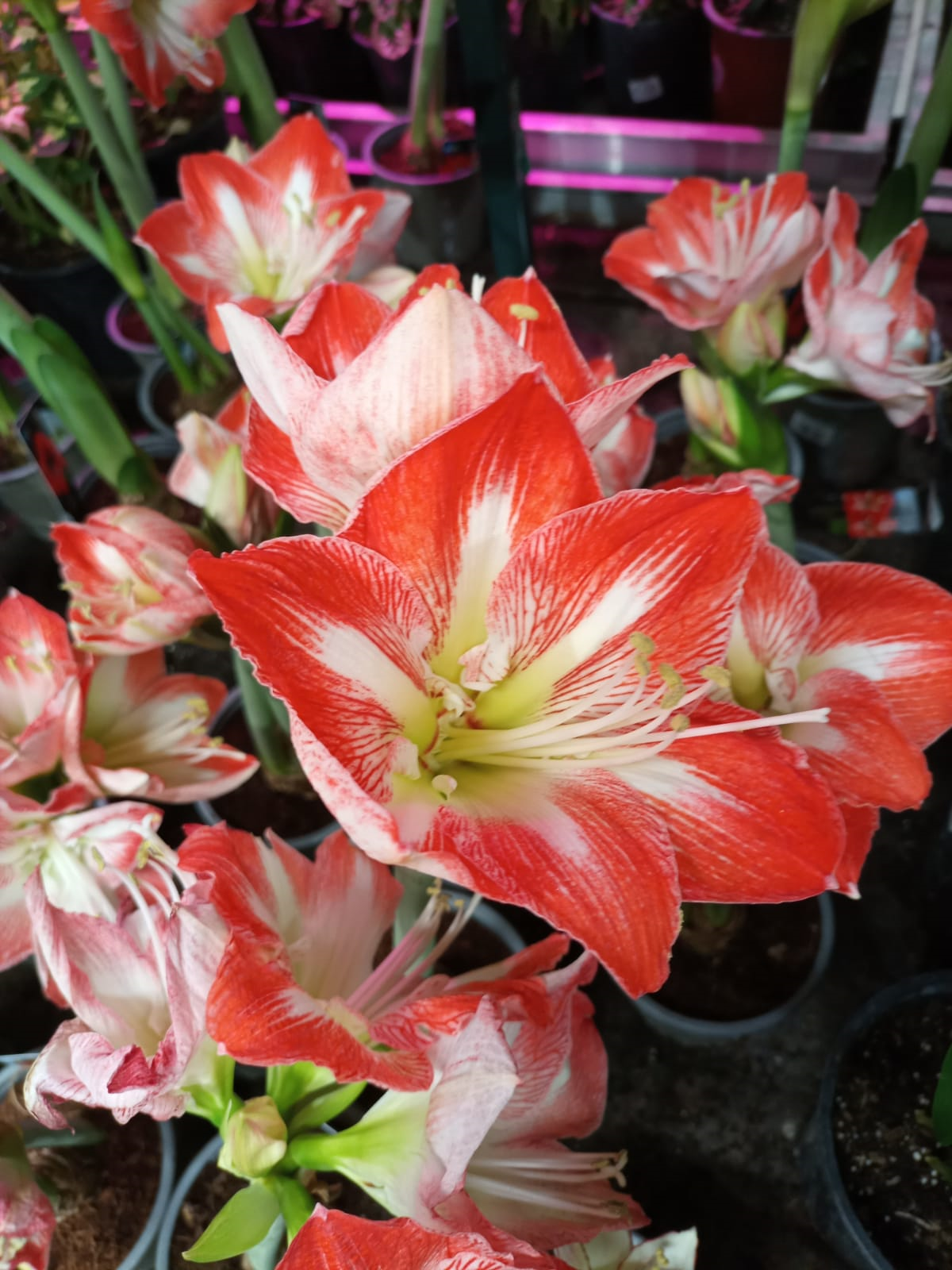
Hello friends of Amazing Nature! I greet you again hoping that you are well and enjoying each day with much enthusiasm and joy, and to contribute to this, I bring you these images of the flowers of the Knight Star, taking advantage of its beauty as that necessary food in our lives, in the sense that Luther Burbank poses to us in the thought that I shared with you previously. And is that its flowering gives us these varieties of white and orange colors with soft white that, together with its trumpet shape, its large size and its arrangement at the end of a long flower stalk, make them very striking and stimulating, ideal to brighten our day.
¡Hola amigos de Amazing Nature! Les saludo nuevamente esperando que se encuentren bien y disfrutando cada día con mucho entusiasmo y alegría, y para contribuir con ello, les traigo estas imágenes de las flores de la Estrella del Caballero, aprovechando su hermosura como ese alimento necesario en nuestras vidas, en el sentido que nos plantea Luther Burbank en el pensamiento que les compartí previamente. Y es que su floración nos regala estas variedades de colores blanco y naranja con blandas blancas que, aunado a su forma de trompeta, su gran tamaño y su disposición en el extremo de un largo tallo floral, las hacen muy llamativas y estimulantes, ideales para alegrar nuestro día.
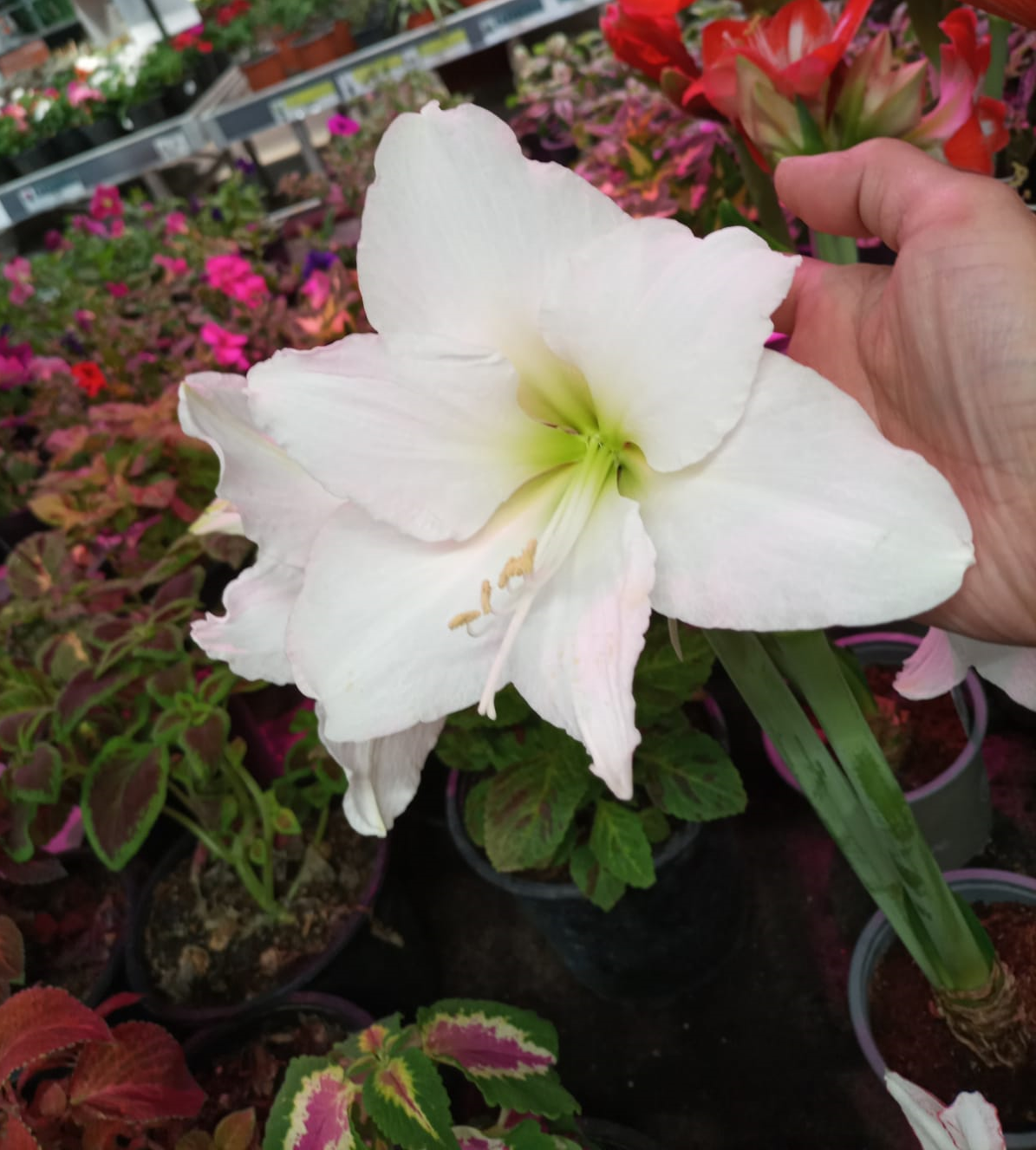
The common name Knight's Star originates from the scientific name Hippeastrum that the Reverend William Hebert in 1821 chose to describe the first species of the genus, which comes from the Greek hippeus and aster meaning mounted knight and star, respectively. Additionally, the botanist William Herbert, who was an authority on the Amarilidaceae family, determined that these plants, of South American origin** were not related to the genus Amaryllis equestris, to which they were initially assigned by Carl Linnaeus in 1753 due to their great similarity to the African genus Amaryllis. This has originated that erroneously these plants are commonly called Amarilis.
El nombre común Estrella del Caballero se origina a partir del nombre científico Hippeastrum que el reverendo William Hebert en 1821 eligió para describir a la primera especie del género, el cual proviene del griego hippeus y aster que significan caballero y estrella, respectivamente. Adicionalmente, el botánico William Herbert, quien fuera una autoridad en la familia de la Amarilidáceas determinó que estas plantas, de origen suramericano no estaban relacionadas con el género Amaryllis equestris, al cual fueron asignadas inicialmente por Carl Linnaeus en 1753 motivado a su gran similitud con el género africano Amaryllis. Esto ha originado que erróneamente se les llame comúnmente a estas plantas como Amarilis.
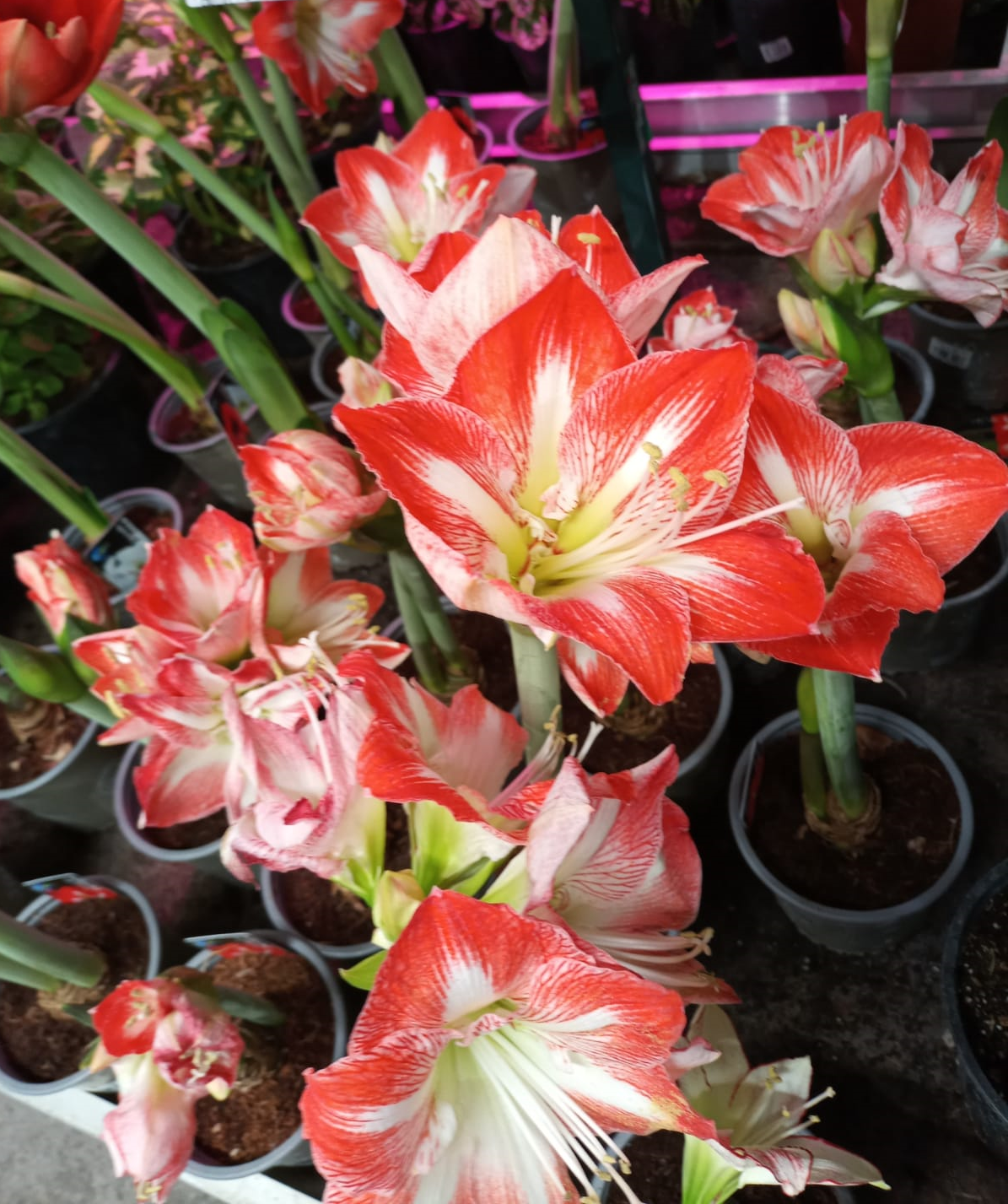
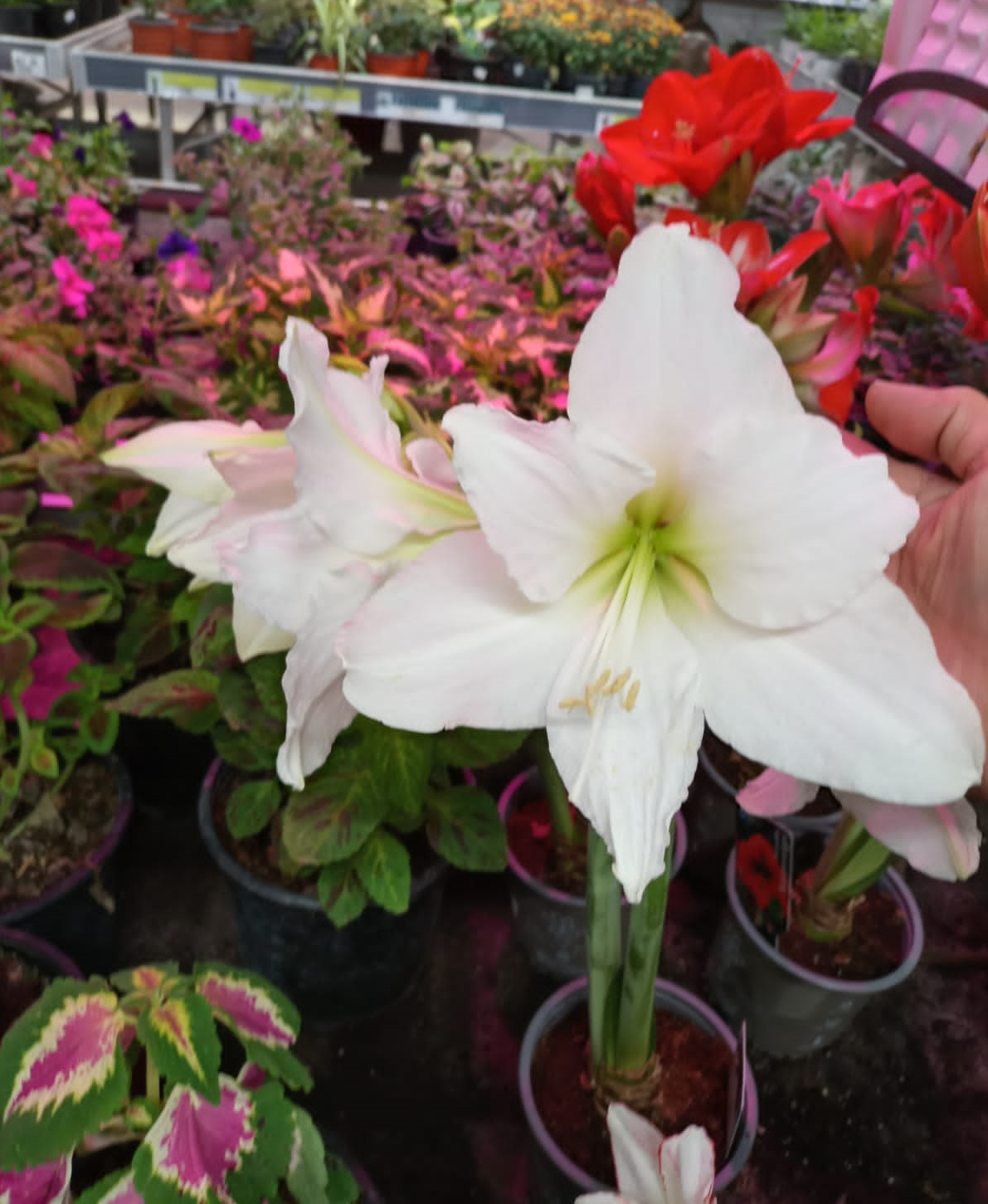
Precisely because of this confusion, we can find several common names that identify it as Amarilis, Amaryllis, Azucena de Mexico, Pink azucena, Bella dama de otoño, Hiperastrun, Lirio de Barbados and, of course, Knight's Star.
The Knight's Star is a bulbous, perennial plant with approximately 75 species native to the tropical and subtropical regions of America although some of its species can be found in upland areas considered temperate.
Precisamente por dicha confusión, podemos encontrar diversos nombres comunes que la identifican como Amarilis, Amaryllis, Azucena de Mexico, Azucena rosa, Bella dama de otoño, Hiperastrum, Lirio de Barbados y, por supuesto, Estrella de Caballero.
La Estrella del Caballero es una planta bulbosa y perenne con, aproximadamente, 75 especies nativas de las regiones tropicales y subtropicales de América a pesar de que algunas de sus especies se pueden encontrar en zonas altas consideradas como templadas.

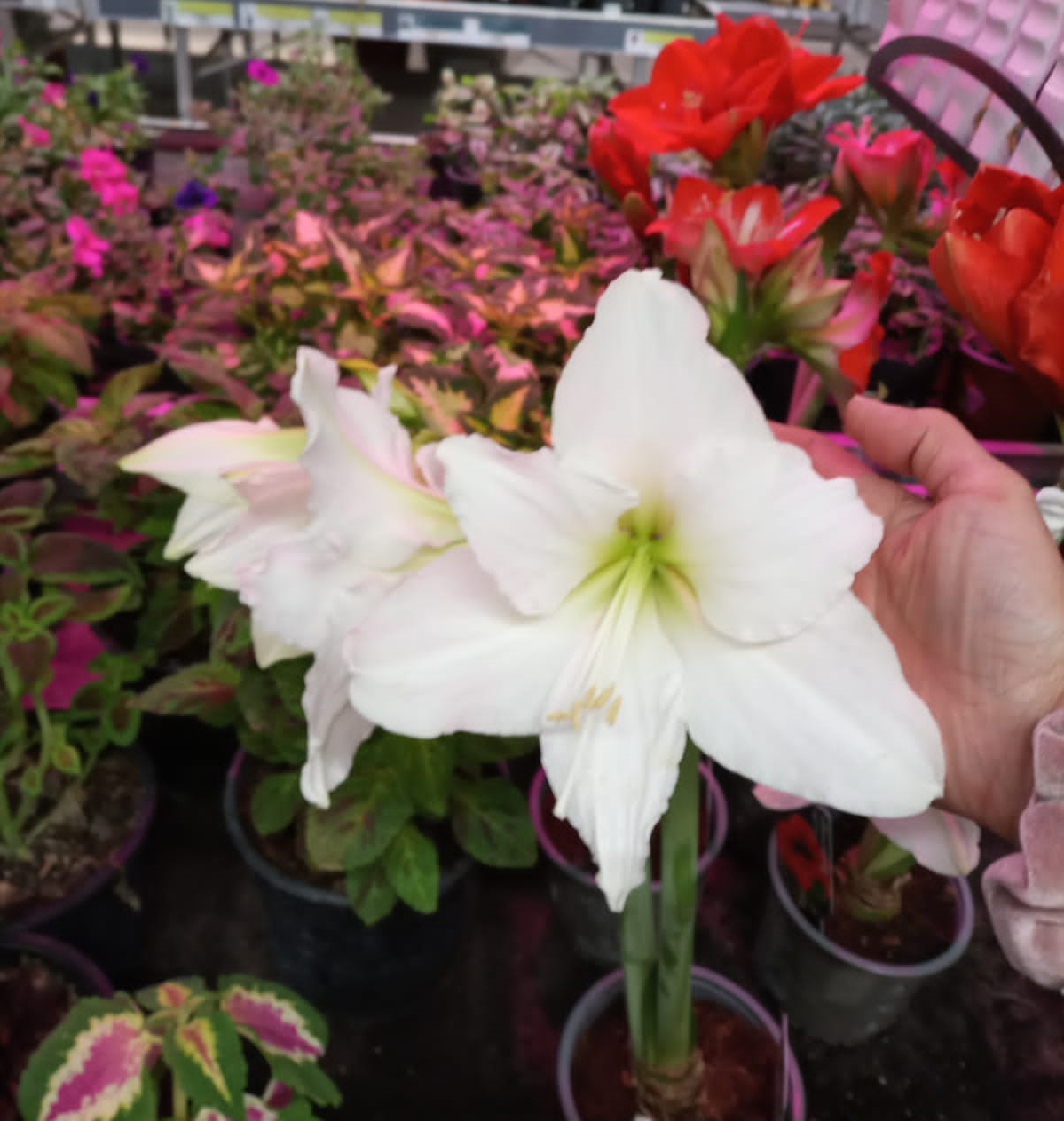
The Knight's Star is a plant that does not require too much or strict care, just watering it when its soil is dry is enough to maintain its beauty and, at the time of flowering, to do it more frequently. It is usually grown in pots that are recommended to be placed in semi-shade, although they tolerate sunlight not too intense their stems will grow towards the light, so, keeping them in pots will allow moving the pot to make the flower stalk grow upright.
To enjoy Hippeastrum for longer we should cut the flower stems when they have wilted, taking care to make the cut near the top of the bulb and avoiding damaging the leaves or any other flower stems. When its foliage begins to turn yellow, it is a sign that the bulb is resting, therefore, the bulb should be left to rest for approximately 3 months, reducing watering until, after this period, renew the surface substrate. All this will allow the formation of new flowers.
La Estrella del Caballero es una planta que no exige demasiados o estrictos cuidados, con sólo regarla cuando su tierra está seca es suficiente para mantener su belleza y, al momento de su floración, realizarlo con mayor frecuencia. Se acostumbra a cultivar en macetas que se recomienda ubicar en semisombra, aunque toleran la luz solar no demasiado intensa sus tallos crecerán hacia la luz, así que, al mantenerlas en macetas permitirá mover la maceta para lograr que el tallo floral crezca erguido.
Para disfrutar por más tiempo del Hippeastrum debemos cortar los tallos de las flores cuando éstas se hayan marchitado, teniendo cuidado de realizar el corte cerca de la parte superior del bulbo y evitando dañar las hojas o cualquier otro tallo floral. Cuando su follaje comience a ponerse amarillo, es una señal de que el bulbo está descansando, por tanto, se debe dejar en reposo al bulbo durante aproximadamente 3 meses, reduciendo el riego hasta que, pasado este período, renovar el sustrato de la superficie. Todo esto permitirá que la formación de nuevas flores.
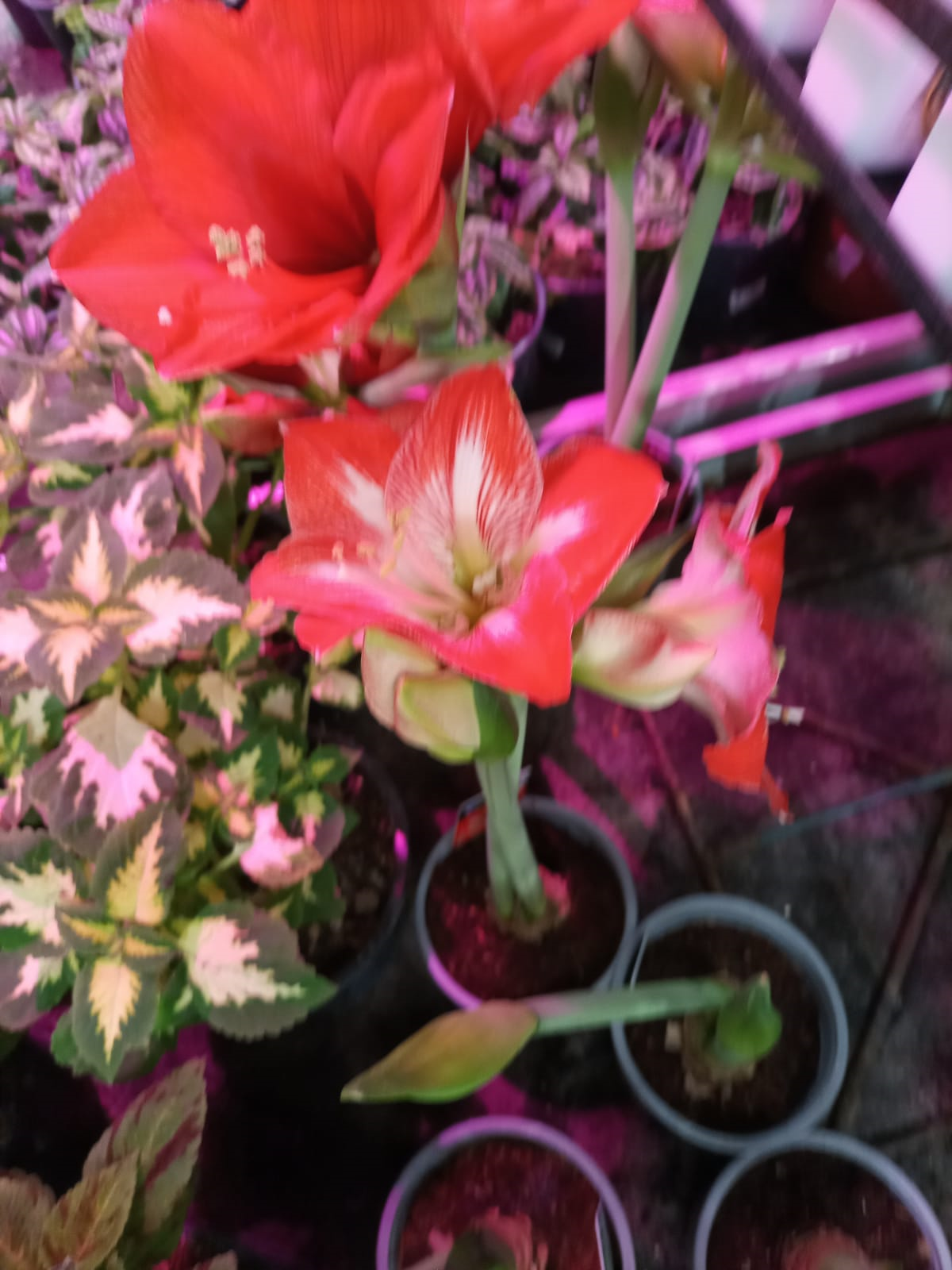
But it is also possible to carry out at home, the propagation of the Horseman's Star through its seeds. This way you can obtain new plants that can take about 6 years to flower. Additionally, you can choose to use the bulbils or bulblets that grow around the main bulb or mother bulb, carefully separating them. In this case, the plants obtained will take 3 to 4 years to flower. There are also other methods of propagation used in commercial practice, such as twin scale propagation or bulb division and in vitro micropropagation, which are more complex but significantly improve the propagation process.
Species of the genus Hippeastrum are highly appreciated for ornamental use given the beauty of their flowers, as well as, the use in the pharmaceutical industry of some of its species for the demonstrated antidepressant, anticonvulsant and anxiolytic effects of the montanin alkaloid isolated in Hippeastrum vittatum.
Finally, I hope, from the bottom of my heart, that the images I bring you today will add a touch of color and joy to your day.
Pero también es posible realizar en tu hogar, la propagación de la Estrella del Caballero a través de sus semillas. Así podrás obtener nuevas plantas que pueden tardar unos 6 años en florecer. Adicionalmente, puedes escoger utilizar los bulbils o bulbillos que crecen alrededor del bulbo principal o bulbo madre, separándolos cuidadosamente. En este caso, las plantas obtenidas tardarán en florecer de 3 a 4 años. También existen otros métodos de propagación que se utilizan en la práctica comercial, tales como: la propagación de escamas gemelas o división del bulbo y la micropropagación in vitro, los cuales son más complejos pero mejoran notablemente el proceso de propagación.
Las especies del género Hippeastrum son muy apreciadas para el uso ornamental dada la belleza de sus flores, así como, el uso en la industria farmacéutica de algunas de sus especies por los efectos demostrados como antidepresivos, anticonvulsivos y ansiolíticos del alcaloide montanina aislado en la Hippeastrum vittatum.
Por último, espero, de corazón, que las imágenes que hoy les traigo agreguen un toque de color y alegría a su día.
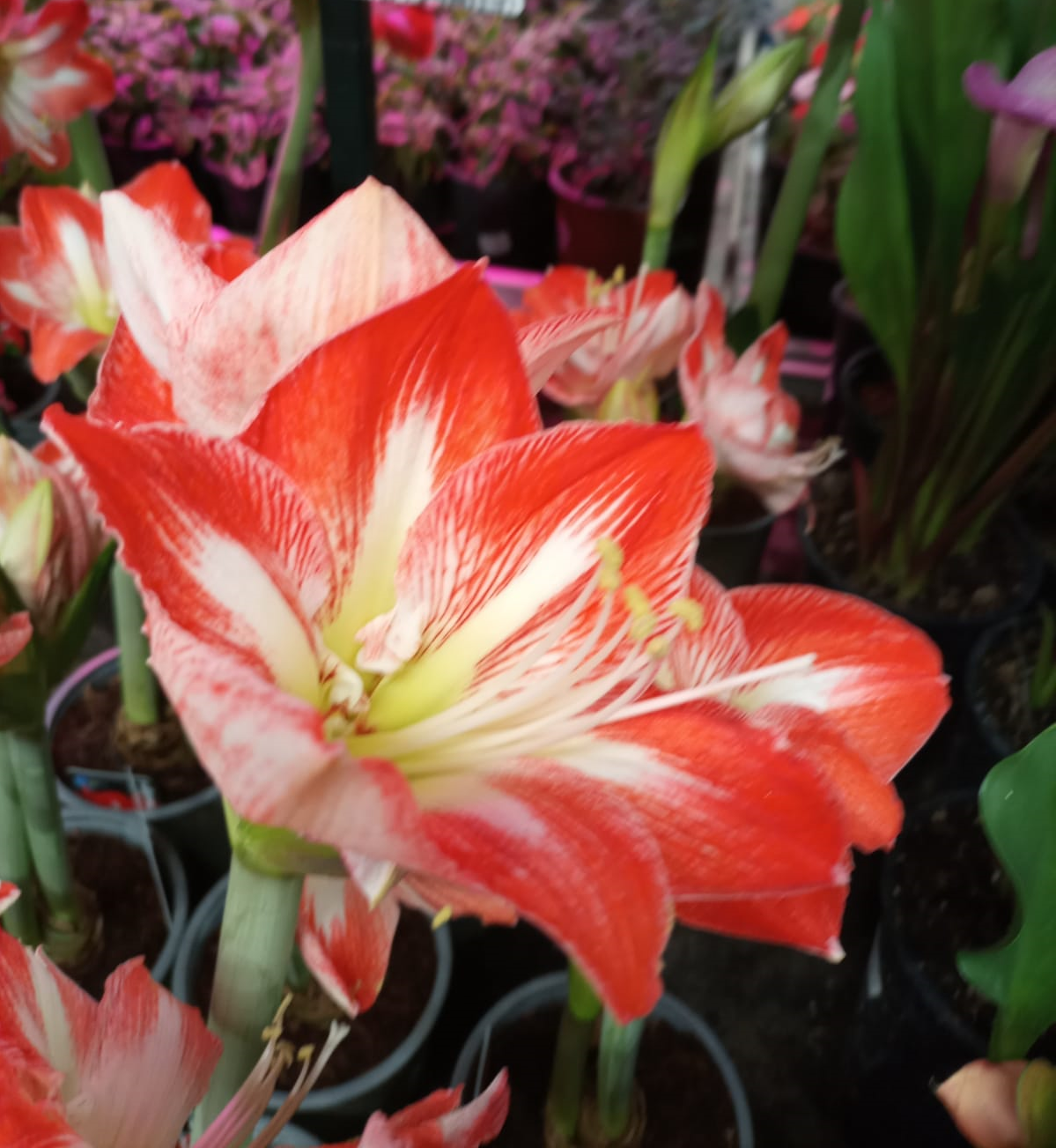
Thank you for your visit! thank you for reading me!
See you soon friends!
¡Gracias por tu visita! ¡Gracias por leerme!
¡Hasta pronto amigos!

Sources Consulted - Fuentes Consultadas
Translation using DeepL - Traducción realizada utilizando DeepL
| Device - Dispositivo: | SAMSUNG A10s |
|---|---|
| Camera - Cámara: | SM-A107M |
| Location - Ubicación: | Lechería, VENEZUELA |
The rewards earned on this comment will go directly to the person sharing the post on Twitter as long as they are registered with @poshtoken. Sign up at https://hiveposh.com.
Hermosas flores las que nos compartes hoy, querida @palomot, y por supuesto, siempre acompañada de interesantes datos sobre esta planta, gracias por compartir amiga
Gracias querida amiga @francyrios75 por tus palabras! Un abrazo!
We appreciate your work and your post has been manually curated by @redheadpei on behalf of Amazing Nature Community. It will be added to the weekly botany curation post. Keep up the good work!
Wow that is very interesting! How do you know all this stuff? You are very smart! Did you know that my real name is Star? You made my day! So I guess that you knew my name before you made this post! So I am not just a star, I am a flower too! Thank you so much this means a lot to me! Amazing post!! 😇
hahahaha what a funny comment star! thank you @surfgrrl!
Yay! 🤗
Your content has been boosted with Ecency Points, by @redheadpei.
Use Ecency daily to boost your growth on platform!
Support Ecency
Vote for new Proposal
Delegate HP and earn more
Thank you so much @redheadpei for your support!
Most welcome @palomot. 🌸